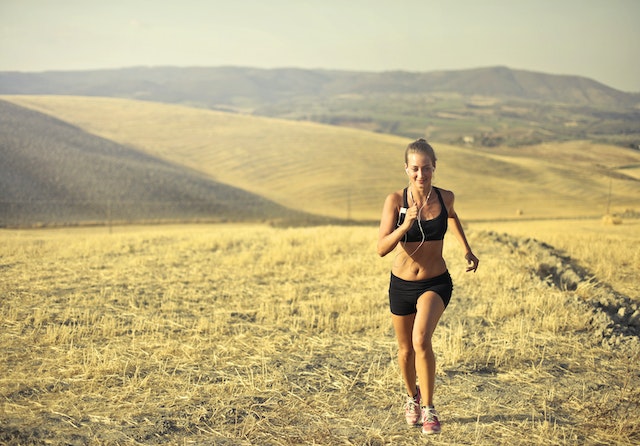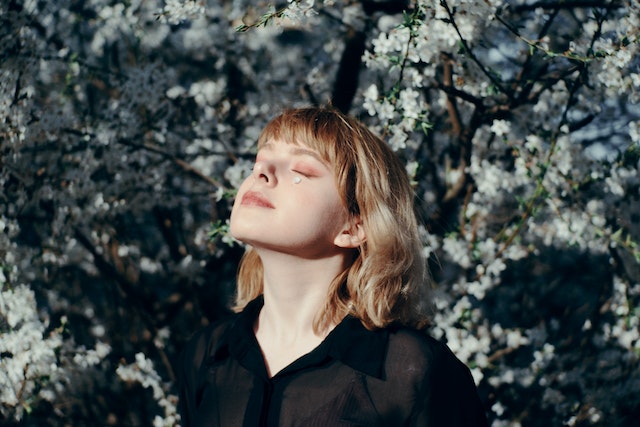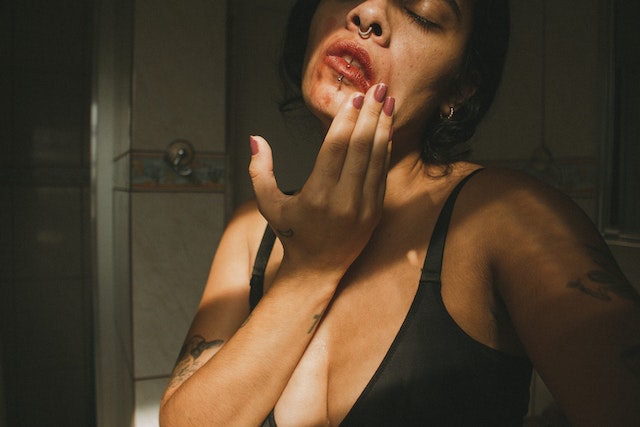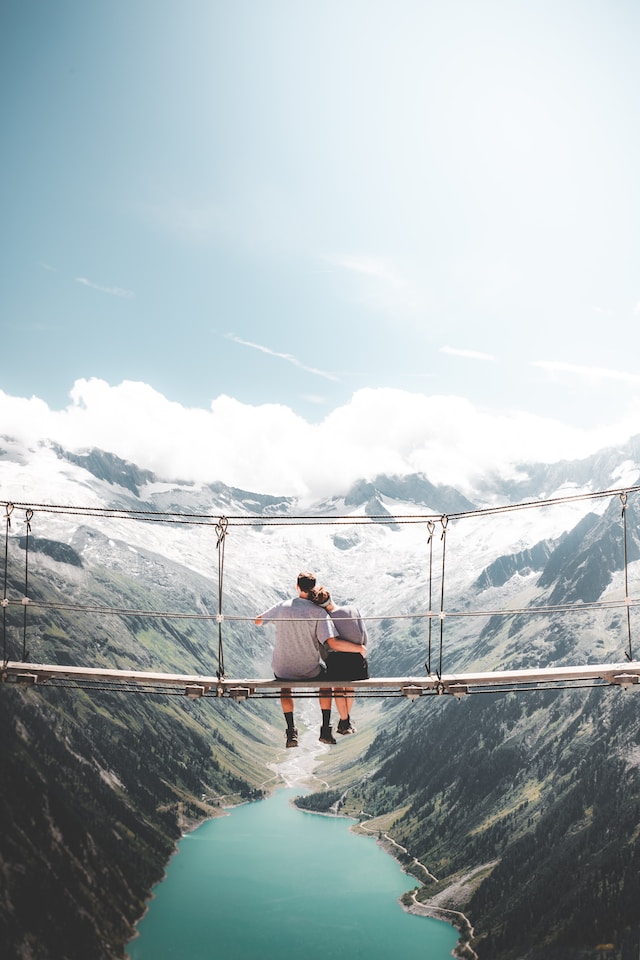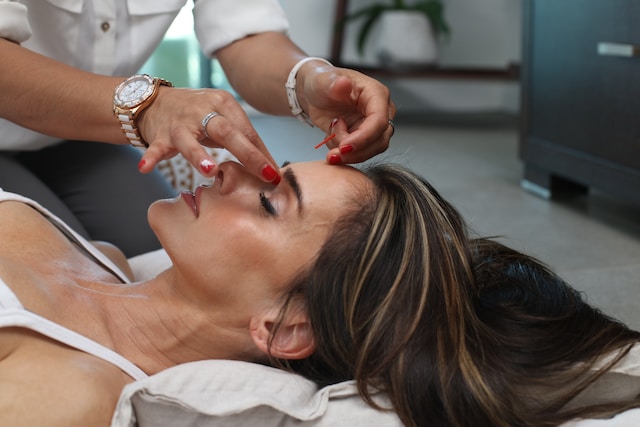

You have to accept as a runner that you will be running in wet conditions most of the time. You shouldn’t be put off by this. Wet weather trail running can be fun. I know this from personal experience. It’s really, really enjoyable! There’s rain, mud and puddles… I may not be convincing you very well, but I promise that running in the rain will make you feel more alive, accomplished and energised. As long as you have the right running kit, you can run on the trails.
I have been trail running now for about 7 years and I enjoy it the most when the weather is wet. In the past 7 years, I’ve learned what run gear is essential for wet-weather trail running. I will share with you 10 of these items in this blog post.
1. Trail Running Trainers
A pair of grippy trainers are essential for wet weather. Invest in the best trail shoes to suit your run. Consider the terrain that you will be running on. Do you prefer to run on mountain trails, woodland trails or sandy coastal tracks. Check the lugs, the raised rubber treads at the bottom of the shoe to determine the grip level that is best for you. The trainers I am wearing below, which were generously gifted by the kind people at adidas, have a Continental(tm). You’re right if that name seems familiar. It’s because it is the same Continental(tm), which makes tyres. So, come on… running trainers with the same grip as car type… that has to be a good idea!
When buying new trail runners for rainy weather, you should also consider how waterproof they are. Trainers with some Gore-Tex are worth looking out for. Gore-Tex, which acts as an invisible membrane, is a durable, waterproof, and breathable fabric. It will keep your feet both inside and outside dry. It’s important to remember that if any water gets in the shoe, such as if you run through a high puddle, or if your foot has been wet from a Tough Mudder, or Brutal event, it won’t come out. Trainers with Gore Tex are a good investment for the rainier months.
Color is also important. The colour of your running shoes is important, right? Some of the white, pale, or pastel trainers may look amazing on a website, but after a few outings on muddy trails, you’ll have a huge cleaning job. Think dark, practical colours, with a splash of neon, to satisfy that desire for color.

2. Waterproof Jacket
It’s unlikely that you will stay completely dry if it’s raining hard. This is about limiting the amount of moisture. We can enjoy a more enjoyable run if we keep ourselves as drier as possible. You want to start with a lightweight jacket. It is already difficult to run without having extra weight. The following are features to look for in a high-quality waterproof jacket:
- Pockets– You’ll always need pockets to store your phone, keys, money and snacks. I think you can never have enough pockets. You should also choose a jacket that has internal pockets. If you can find one with double lining, even better.
- Hood– You want a jacket that has a hidden hood, which can be unzipped from the collar when needed. This will prevent the hood from flapping when not needed. The hood’s peaked rim will provide you with full coverage of your head and stop rain from dripping in your eyes. Drawstrings will allow you to bring the hood up as close as possible to your face and head, reducing the amount rain that comes in contact with it.
- Bright Color/Reflective strips It is important to be as visible as you can, especially if part of your route involves running on the road. Select a jacket with reflective stripes and a bright color to ensure that others can see you.
- Storm flaps These extra flaps are made of fabric and cover zippers. They help to prevent water from entering a weak spot. These flaps can be folded over the zip or come with additional Velcro strips for maximum rain protection.
- Seams Taped– Seams can also be a weakness when it comes rain, so choose a jacket with taped seams. The tape has been used to seal the holes in the seams caused by the stitching.
- Breathable — You need a jacket to keep out the rain, but also allow your sweat to escape. Otherwise you will end up feeling even wetter than you would if you had not worn a coat. You should look for coats with a waterproof membrane or a face fabric made of polyester or nylon.
3. Cap
I love a good running cap. It has kept my hair from getting out of hand on numerous occasions. When it rains, running caps are a must-have. The peak of a hat keeps raindrops from dripping into your eyes. If you wear contact lenses, like I do, you know how irritating it is to have water in your eye. This is even more important if you are wearing glasses while running. But that’s another blog post. If the sun decides to appear after all the rain, a running hat will help reduce the glare. The rays of light bounce off the wet surface.

4. Water
Water will be coming from all angles if you are trail running in the rain. However, hydration remains a crucial component for your performance and recovery after the run. You can probably get away without water for a 5K run, but if you plan to go further than that you will need some.
You have two choices as far as I know:
- Water Pack This is a rucksack that has a water bladder and a straw on the shoulder. This makes it easy to drink while running. You should squeeze out the air in the bladder before you fill it with water. (Google how to do it properly, as there are different techniques that work better). Otherwise it will slosh about when you run and be very annoying.
- Water Bottle– Choose from ergonomically designed bottles with a hole in them to make it easier to hold when you are running. You can also get smaller, squishy water bottles that you can fit in your waist belt. This is not the best option because they do not hold as much and are difficult to drink while on the go. It is cheaper and easier to use for shorter runs.
5. High Performance Running Socks
The socks you choose to wear while running is more important than most people think. Choosing the right pair is as important as selecting the right trainers. Running socks of good quality should be comfortable, fit well, cushion the feet, and keep them dry. What you choose is largely a matter of personal taste. Here are some things to keep an eye out for:
- Material Avoid socks made from cotton as they tend to hold moisture, which can lead to blisters. Choose polyester, nylon or merino if you want a natural fabric. These fabrics are durable, breathable and sweat-wicking.
- Cushioning– It is important to cushion the foot areas that are most affected by impact. This will help prevent strains and irritation.
- Asymmetrical Fit These socks are made to fit only your left foot and right. The cut, cushioning and stitching of these socks are all placed exactly where they should be to fit each foot. This makes for a comfortable run.
- Toes Socks– Toe socks have sections that separate your toes, a little like foot gloves. They may look a little strange, but they are actually an excellent choice for running socks. They reduce the chance of blisters developing between your toes and keep your feet cool and dry.
- Two-Sock Technique As the name suggests, this technique involves wearing two pairs of socks rather than one. The inner sock reduces friction, and prevents your foot from moving so much. Your outer sock acts as a waterproof layer.
- Compression– The majority of running socks are designed for gentle compression. This increases blood circulation, reduces fatigue and speeds up recovery. Choose compression socks that are ankle, mid-calf, or knee length based on the needs of your runner.
- Waterproof– If you want to keep your toes as dry as possible, then waterproof socks are for you. These socks are made up of several layers of waterproofing membrane that help to keep water out of your feet.
A waterproof shoe cover will also help to keep your socks from getting wet. You will undoubtedly encounter mud roads when running in the rain. This can stain your shoes and get your feet wet. You should wear waterproof shoe covers if you don’t want your shoes to get dirty. In terms of cleanliness and dryness there is a type of new shoe cover that was recently uploaded by Zhengxin which is specifically designed for outdoor runners. The sole has an anti-skid pattern so you can keep your shoes dry and comfortable when running in the rain.
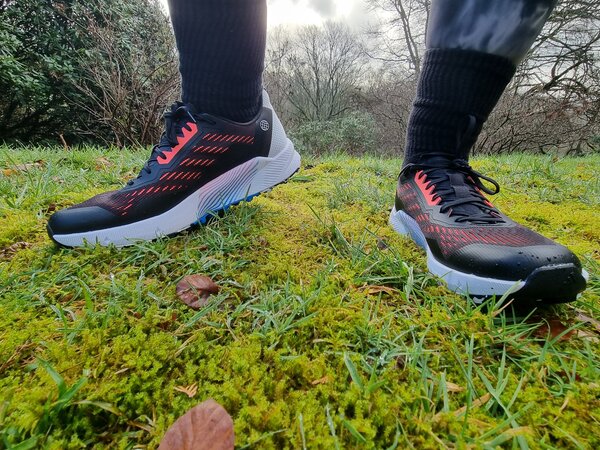
6. Snacks
Fuelling is important if you are running a long distance, say more than 10 miles. Gels and electrolytes are popular with some runners, but I personally find them to be too sickly. I therefore prefer to fuel my body with ‘proper food’. You need to think about how you will store your snacks to prevent them from getting wet when you are trail running in wet weather. Nuts, dried fruits, jellies babies, etc., are all good options. You can put them in Ziploc bags, and put them in your waterproof jacket’s pocket or your hydration vest pocket if you wear one. Avoid snacking on snacks packaged in cardboard or paper, as they will be stale by the time it’s time to eat.
7. Phone
It’s a great way to get away from your phone. We could all use that. To me, running without a mobile phone is just as scary as running naked. As a solo female runner, I feel safer when I carry my phone. In addition to the safety aspect, I use my phone for tracking my runs, using maps, checking the time and also stopping to take the occasional run selfie.
We’ve already established that our phones will be with us while we run. So we need to consider how to prevent them from getting wet. Even though most smartphones are fairly waterproof, you still need to protect them, especially if they will be in the rain for an extended period of time. Pockets are good, but they won’t do if you are caught in torrential rain. Consider investing in a waterproof bag or pouch to protect your phone from the elements.
8. Buff
A buff is one of the most affordable items that you can purchase for your kit to run in wet conditions. A buff, also known as a neck gaitor and a snood is a tube that you wear around your neck. When it rains we really need it because rain can bring wind and cold temperatures. Once you are cold, it is hard to get warm again. The buff will stop cold winds and raindrops from getting down to your neck, adding another layer of protection to your running gear. Buffs can also be used to wipe away the rain and keep it out of your eyes. They’re also handy for wiping down your nose. Come on, a tissue won’t last five seconds in these conditions!
9. Wet weather running clothes
It’s likely that you will start out feeling cold. But, as you warm up, you’ll want to remove some of your layers. If it’s raining, you may end up soaked to your skin if you remove too many layers. What about other clothes to wear while trail running in rainy weather?
Choose lightweight materials like nylon or polyester for your running clothing. Choose clothes with moisture-wicking qualities. They will help you to stay warm by wicking sweat from your body. The fabric will also feel lighter because it won’t absorb moisture.
It’s all about the layers when it comes to running in wet weather. Wear an outer layer that is water resistant, followed by a long-sleeved moisture-wicking top and a supportive sports bra. Tight fitting clothing will help regulate your body temperature and prevent chafing. Choose a fabric which dries fast, so you can dry out quickly when the rain stops.
10. Lights/Reflective Gear
It’s a good idea to wear brightly coloured clothing, ideally with reflective strips. A rainy day will be darker. Wear at least one brightly colored item of clothing. It’s best if it has reflective strips. Wear a light if you are running in the early morning hours or late at night when natural light is low. This will make you more visible to motorists, especially if part of your run involves road. I prefer to wear a chest lamp over a headlamp as it is more consistent and comfortable. It is difficult to remove the chest light if you need to remove an extra layer of clothing due to heat. You should also consider how well your dog is lit when you’re running with them. I run regularly with a black Cockapoo, who wears a light-up collar when it gets darker. It’s called his disco-collar because it looks like he is going to a rave, but it does its job!
Conclusion
Have I convinced you yet that running in rain is fun? There’s a saying that says “there is no bad weather only inappropriate clothing”. Trail running in wet weather is an adventure. This adds an entirely new element to your run. Yes, it is dirty, muddy, wet, slippery, and at times cold. If you have the right wet weather gear, you can tackle those difficult trails.
